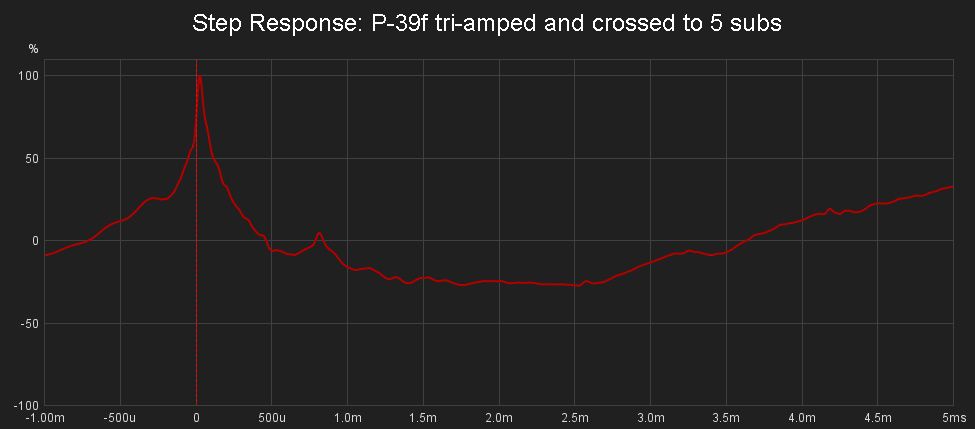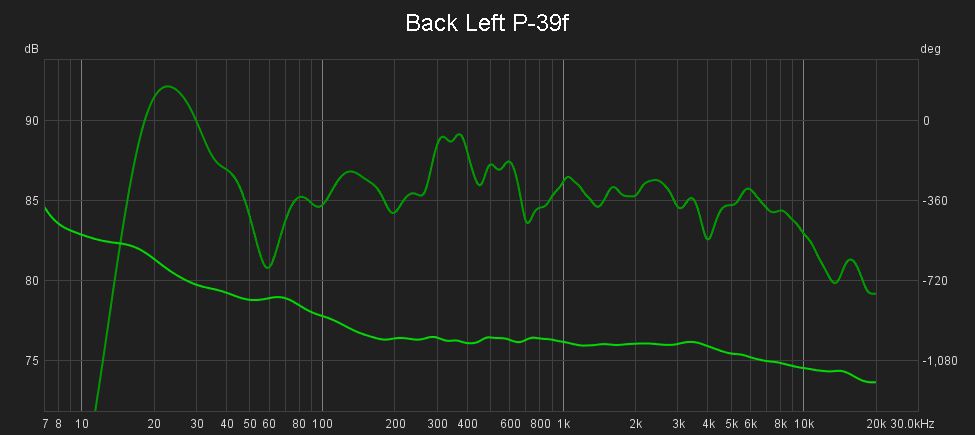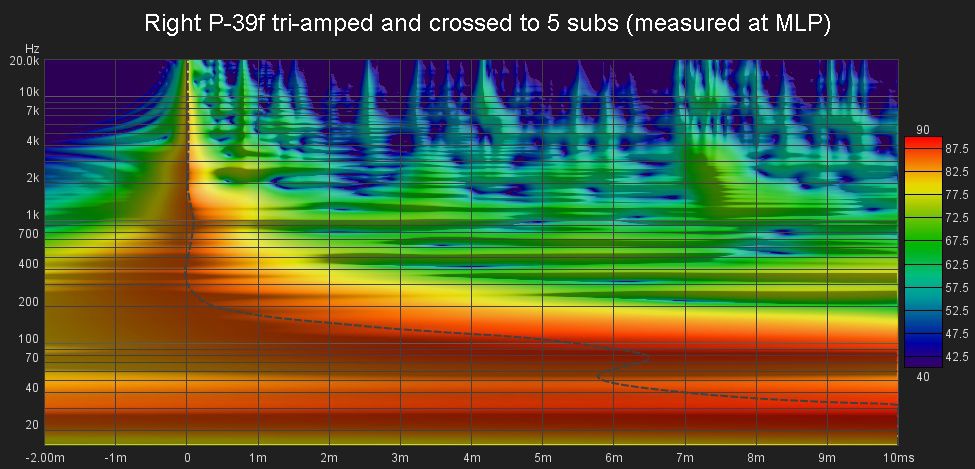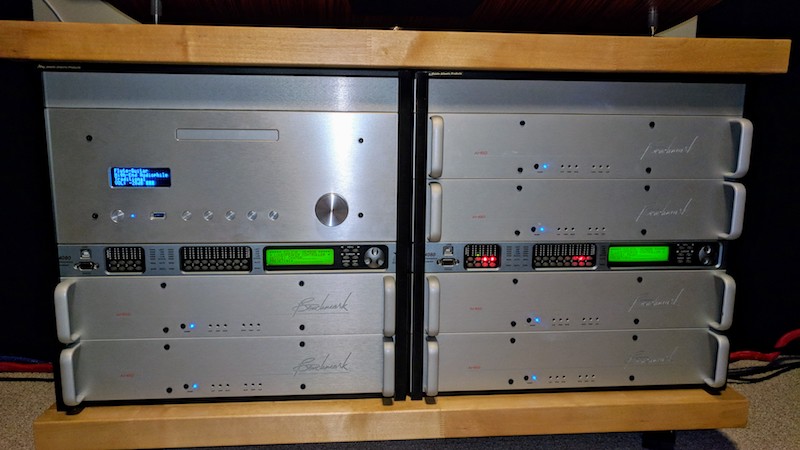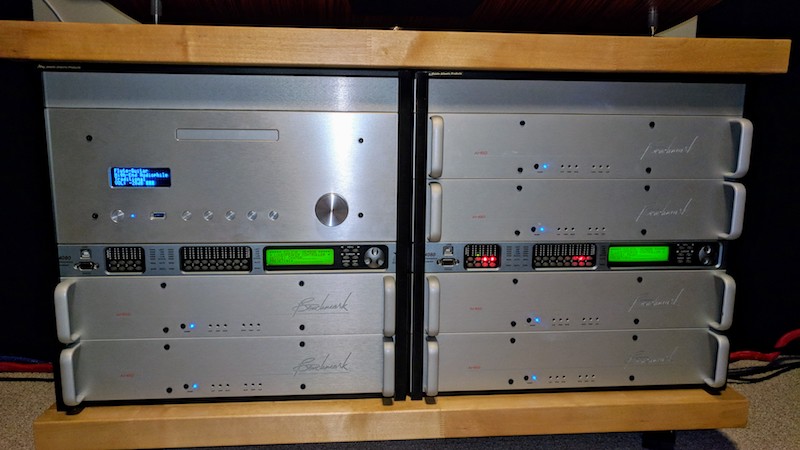-
Posts
682 -
Joined
-
Last visited
Content Type
Forums
Events
Gallery
Everything posted by etc6849
-
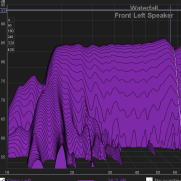
palladium Wanted: Klipsch Palladium P-17b and/or P-39f Speakers
etc6849 replied to etc6849's topic in Garage Sale
Thanks! I will keep that in mind. Your speakers sound much better in my current setup btw (full active triamping crossed to 5 subs). Drop me a line if you are ever in Columbia, SC if you want to listen to them again. -

palladium Wanted: Klipsch Palladium P-17b and/or P-39f Speakers
etc6849 replied to etc6849's topic in Garage Sale
What state are you located in? -

palladium Wanted: Klipsch Palladium P-17b and/or P-39f Speakers
etc6849 replied to etc6849's topic in Garage Sale
An Atmos decoder capable of providing 16 channels of AES digital output is finally available for under $5k. https://www.audiosciencereview.com/forum/index.php?threads/new-product-arvus-h2-4d-atmos-renderer-simultaneous-16-channel-aes-balanced-analog-dante-output.26248/ It's really neat that the 1U (1.75") height Arvus H2-4d would fit nicely in my current rack setup too. I'm just not sure where the extra amps and speaker processor (4x8 DSP+DAC) will go; probably under one of the rear subs. Previously, this was a $20-30k endeavor just for the processor. It was never going to happen as I don't listen to my theater as much as I used to. Most of my time now days is split between my son and stocks, but I still love audio. -

palladium Wanted: Klipsch Palladium P-17b and/or P-39f Speakers
etc6849 replied to etc6849's topic in Garage Sale
@MMurg Wow, that's a very nice setup. I plan to do something similar. My Palladium setup isn't complicated enough... I'm only using 20 channels of DSP, DAC and amplification for 5.1 (5 actively tri-amped speakers with 5 subs). I'd like to get my channel count over 30 lol. I get incredible side imaging with four P-39f's. Can't say I'm dissatisfied with the setup by any means. -

palladium Wanted: Klipsch Palladium P-17b and/or P-39f Speakers
etc6849 replied to etc6849's topic in Garage Sale
Thanks, and yep... They are all rare at this point which is why I'm not in a hurry to buy. During the upcoming recession I want to move to a bigger place and I'm planning on a Palladium Atmos setup. I figure I'd start collecting more speakers now as they come up for sale. They just won't get used for two years or so lol. -

palladium Wanted: Klipsch Palladium P-17b and/or P-39f Speakers
etc6849 posted a topic in Garage Sale
Looking for some Klipsch P-17b bookshelf speakers and maybe another pair of Klipsch P-39f's if they are close to Irmo, SC. The P-17b's are pretty easy to ship. -

Using REW to Determine Time Delays Between Drivers
etc6849 replied to Chris A's topic in Technical/Restorations
I would compare the waterfall plots to see the differences. It is much easier to see things that way if you are only looking at the bass region. You will see a faster decay of 20-80Hz. Time aligning sub drivers with sub drivers is much easier. Just use the impulse/etc plot to time align them. Start with one sub, then align another to it, then align another to one of the first two subs, etc... After that, you hook all the subs up to a common output, pick a filter, measure, then align each woofer with all the subs going at once.- 221 replies
-
- active speaker alignment
- rew
-
(and 1 more)
Tagged with:
-

Using REW to Determine Time Delays Between Drivers
etc6849 replied to Chris A's topic in Technical/Restorations
I do level, then set the crossovers, then do time alignment as I described. Things should be done in this order. Even setting level later will impact the crossover point (it sounds like you already are aware of this, but I'm putting it here for others). The slope at the crossover region is seldom a brick wall, so there is plenty of overlap for the time alignment method I describe. Technically, FIR filters don't impact phase (using them for woofer to midrange and midrange to tweeter), so really I could go back and adjust things out of order, but for the low order bessel filter I use for my woofers and subs I definitely can't do that obviously.- 221 replies
-
- active speaker alignment
- rew
-
(and 1 more)
Tagged with:
-

Using REW to Determine Time Delays Between Drivers
etc6849 replied to Chris A's topic in Technical/Restorations
@Chris A My step response looks very different than yours. I think mine might look more ideal, but honestly, I have never looked at my step response so I am curious what you think. I have never used psy smoothing either, but seems like a good idea so here is what things look like for SPL and phase. Note I intentionally tilted levels when I set them up, and I'm not using any PEQ or Dirac. Perhaps if I point the mic at the speaker as you suggest it would look nicer. I'm definitely capturing more of the room effects the way I've been measuring. One thing that is confusing is the phase shift that appears at 6kHz and 13kHz when I unwrap phase. This only appears in my front two speakers and not my rear speakers.- 221 replies
-
- active speaker alignment
- rew
-
(and 1 more)
Tagged with:
-

Using REW to Determine Time Delays Between Drivers
etc6849 replied to Chris A's topic in Technical/Restorations
I have a small room, so I just did all measurements at the listening position, with the mic pointed toward the ceiling and the tip at ear height. For the time alignment, I also did something different. My thinking was for time alignment, the primary concern would be around the crossover region. So I performed band limited measurements for the drivers over a reasonable overlapping region, then compared the impulse/ETC plots. For example, to align a sub to a woofer with a 110Hz crossover, I would do measurements covering 20-200Hz for both my sub and the woofer. I then compare the two ETC plots, and get the time delay that way. I did similar method for the woofer and midrange, etc... What is interesting is that this seemed to produce decent results after looking at the peak energy curve on the spectrogram (something I didn't think about using for time alignment).- 221 replies
-
- active speaker alignment
- rew
-
(and 1 more)
Tagged with:
-
@Chris A Music itself can mask THD too. However, it seems some instruments are better than this than others such as pianos that don't mask amp distortion as well (since they produce overtones that are not perfectly harmonic per this link). Here are some calculations I did for matching an amp to my bookshelf speakers. I should have probably done this prior to tri-amping my main speakers, but the driver data was not readily available. For most though, driver with horn sensitivity is likely available, so they can follow the same methods as below provided they have data for their amp (I used actual measurement data from the links below to ensure accuracy instead of the manufacturer's data). Klipsch P-17b speakers: http://e994010f48279d85b5d7-a0bc3fbf1884fc0965506ae2b946e1cd.r57.cf2.rackcdn.com/legacy-files/p17b_-_Spec_Sheet_635738650125214000.pdf Emotiva XPR-1 amp measurements: https://hometheaterhifi.com/reviews/amplifier/power-amplifier/emotiva-xpr-1-monoblock-power-amplifier/ Benchmark AHB-2 amp measurements: https://benchmarkmedia.com/blogs/application_notes/interpreting-thd-measurements-think-db-not-percent For the XPR-1 amp, I calculate that it will have a worst case 34 dB SPL of distortion at a 80dB SPL listening level (assuming 20 dB peak, giving a 100dB SPL peak). Also, using the XPR-1, my speakers would reach an SPL of 121dB, and have 54dB SPL coming from the amps distortion. Since this exceeds the speakers max recommended output, likely the distortion at 121dB SPL would be greater than 54dB (amps + speakers)... Don't worry, I don't plan to ever have them that loud. If I use an AHB-2 amp with the bookshelf speakers, I'd see a peak level of 113.6dB (fine for any volume I'm going to use them at), and the distortion would be below 0dB SPL at -6.4dB SPL, so it would be impossible for it to ever be audible. I'm ignoring the Benchmark DAC 3 DX (DAC I'm using), but it's not the limiting component for the XPR-1 amp case. If both amps were played back at 80dB SPL with a 100dB SPL peak level, we'd see the AHB-2 contributes -20dB SPL (not audible) while the Emotiva XPR-1 contributes 34dB SPL (might be audible depending on room). This surprises me some as the Emotiva XPR-1 measures as good as amps costing a lot more. Based on the used market though, AHB-2 versus two XPR-1's seems fair based on used prices. Given that the bookshelf speakers are in my living room, I am fine with 34dB SPL of noise from the amps as it is a noisier room and I doubt I will hear a difference. I have less in the XPR-1's anyways as I bought them off craigslist Bechmark AHB-2 case: (I only calculated noise from the amp for max level below, but obviously any level below that will be even lower) For fun, I re-did the max SPL from the AHB-2 amp using Pascals, then converted to SPL after cross-multiplying to obtain the new Pascal value... Of course it is the same: Application Notes I studied: https://benchmarkmedia.com/blogs/application_notes/interpreting-thd-measurements-think-db-not-percent https://benchmarkmedia.com/blogs/application_notes/speaker-efficiency-and-amplifier-power https://benchmarkmedia.com/blogs/application_notes/audio-rules-of-thumb
- 368 replies
-
- digital active crossover
- faq
-
(and 1 more)
Tagged with:
-
I guess it depends on space. To be totally honest, if I can fit two horn loaded subs or 5 well engineered direct subs like I have now (9 sub drivers in total), I think my current setup would win in terms of measurable distortion at the MLP as my room is on the small side. What really surprised me was the performance I gained by going with 5 subs, especially considering I have three woofers in each speaker crossing to the 9 sub drivers (for example, there are 12 drivers working for a 100Hz tone). This has led to a setup with measurements like .363% THD at 29 Hz at 90dB and .239% at 80 Hz at 92dB: I did measure my room as you rightly point out. With my lights off (LED lights buzz just a tiny bit), I get this RTA result: I see plenty of places where less capable amps would make hiss depending on the spectrum of the noise content (and they did, which is why I spent so much to replace them). This was the case with the old Emotiva XPR amps I had, and I think their SNR was around 92dB at 1 watt, but they had a lot of hiss when I tri-amped. Yep. I have reached that. I do hear a very faint hiss when my head in the the horn. However, I still may buy several 8 channel DACs at some point and do all the DSP work on the PC. I haven't yet, mainly because I'm not sure I'd hear a difference.
- 368 replies
-
- 2
-

-
- digital active crossover
- faq
-
(and 1 more)
Tagged with:
-
Here are some more measurements to consider. I've owned several of these in the past before I found the path to audio nirvana 😀 It seems one can gain 30dB of dynamic range or more by using digital out from a PC and using a well measuring DAC and feeding an amp (even without tri or bi-amping). Combining everything possible to reduce overall distortion (room treatments, signal chain, multiple subs, actively tri-amping) has created a system that most will never hear the clarity of. Well worth the expense for the performance I'm getting. I know I could be driving a nice car instead, but most of my gear will hold it's value better than a car. Some AVR measurements: Some AVP measurements:
- 368 replies
-
- 2
-

-

-
- digital active crossover
- faq
-
(and 1 more)
Tagged with:
-
Indeed. It is very hard to measure that low from what I understand. Amir has at least $50k in test equipment (his Audio Precision APx555 alone is over $25k?). I definitely don't think most reviewers (unless they are technicians or test engineers) and many manufacturers (sad but true) have the necessary test equipment to measure that low.
- 368 replies
-
- 1
-

-
- digital active crossover
- faq
-
(and 1 more)
Tagged with:
-
What I found was that eliminating the extra unnecessary DAC improved performance. I'm not sure if this is because the ADC was the limiting factor (which also gets eliminated when you send digital straight to your DSP), but likely. Just in case anyone says all DACs sound the same: it depends on your entire signal chain and even the noise in your room. When your amps are no longer the limiting component affecting overall dynamic range, the extra DAC and ADC can be the remaining factor needing improvement. I bet most of the blue DAC measurements below are from DACs that will sound the same (all are very well engineered), but many of Amir's SINAD measurements of AVRs and even expensive DACs look so horrible, that for sure those using sensitive speakers with a consumer grade AVR/AVP or poorly designed DACs are missing dynamic range if they use a leading amp like the Hypex nCore NC400 or Benchmark AHB2. I wouldn't have believed how much dynamic range people are missing, but the measurements don't lie: https://www.audiosciencereview.com/forum/index.php?threads/master-sinad-distortion-comparison-graph-for-dacs.4814/ Amps are even worse too. Compared to the best known measurements of the Benchmark AHB2:
- 368 replies
-
- 1
-

-
- digital active crossover
- faq
-
(and 1 more)
Tagged with:
-
I'm glad to finally see measurements of the hypex ncore modules. These measurements look really really good, and the amps are very small. ATI also makes an 8 channel amp that uses OEM ncore modules... now I see why. https://www.audiosciencereview.com/forum/index.php?threads/review-and-measurements-of-hypex-nc400-diy-amp.5907/
- 368 replies
-
- 2
-

-

-
- digital active crossover
- faq
-
(and 1 more)
Tagged with:
-
ATI makes some 8 channel amps that use the hypex n-core modules: http://www.ati-amp.com/AT54XNC.php. I have a feeling these would make great amps for tri-amping, and you could fit 16 channels in 8 rack units and have much lower noise floor than other consumer brands. They are likely the best bang for your buck, and the only amps that measure better are the Benchmark amps, but they are very expensive even if you buy them in bulk like I did. I would probably call ATI and see if they have some B-stock units. They have gave me a 50% discount 8 years ago, but I'm not sure what they are doing now days. As for ease of use here's a video of some of the controls and display in action: https://drive.google.com/open?id=19DguWj0G3R-7xSj7UBlGWrW507STXZSA And here is some of the code I had to create to get everything working: http://cocoontech.com/forums/topic/30996-new-modules-matrix-orbital-vk-displays-vfd-rme-totalmix-osc-jriver-and-mce-controller/ You can get a PC to act like an appliance, but it does take a lot of setup. Even when I use the keyboard volume control, RME TotalMix changes level (instead of the Windows volume mixer). The JRiver apps make it very easy to play a movie or music though using an iPad or Android tablet too.
- 368 replies
-
- 1
-

-
- digital active crossover
- faq
-
(and 1 more)
Tagged with:
-
Some pics of my new PC case. I'm using this rack for tri-amping my C, FL and FR, and also crossing to 5 subs that are individually time aligned and level matched. The PC case didn't do anything for sound, but sure looks nice. I highly recommend everything else in the rack though because the amps and processors did improve my sound and measurements over the consumer gear I had before.
- 368 replies
-
- 3
-

-
- digital active crossover
- faq
-
(and 1 more)
Tagged with:
-
If you can find a used XD4080, I would go for it over the XP4080. I would also try calling Acoustic Frontiers and haggling on a new one too. The one's I bought from him were well below retail (somewhere between 1400-1600), but he is a nice guy and gave me a decent price compared to any pro audio online place I tried. I use the Xilica XD's FIR feature for the LF/MF/HF and wouldn't go back. You are limited on taps (they change the slope of the FIR), but there are plenty of taps for my speakers and keeping distortion below .2% at the listening position and at 90dB. This compares with some of the worlds best headphones in terms of distortion, but magically my speakers are 7 feet away where as Focal beryllium driver is an inch from your ear. It is 100 times easier to get great sound when setting up FIR filters. I played with a lot of different filter types, but FIR won hands down and I really believe I hear a difference. Not distorting phase is a huge plus for FIR filters. Someone really experienced like Chris can no doubt get a setup sounding great without FIR filters and get a very nice looking phase, but he has read a lot and spent a lot of time to get there and is one smart dude. I was immediately happy with FIR and the results measured very well with less phase wrapping in the REW plot versus what I could do with IIR filters.
- 368 replies
-
- 2
-

-

-
- digital active crossover
- faq
-
(and 1 more)
Tagged with:
-
True. They are Benchmark AHB2 amps and the speaker processors are Xilica XD4080s. I'm doing FIR filtering for actively tri-amping some P-39f's, and also cross to 5 subs. It is like any hobby... I could have bought a sports car, but instead buy used cars with cash and finance my audio gear.
-
-
This is a great option if you want to experiment with a digital solution with AES out: https://www.amazon.com/GUSTARD-32Bit-384KHz-Digital-Interface/dp/B00PU3R6KY/ It is what convinced me to buy the RME AES32 PCI-E 16 channel input/16 channel out card. The driver support and quality of the RME cards are top notch. Although it was expensive, it is very flexible (can show up as a 16 channel device to a DAW/JRiver and also a 8 channel device to Windows at the same time so Netflix still works), and you can even control the RME mixer over the network which is how I control the volume (via my home automation system). Having a 5.1 setup that uses AES out from my PC, three Xilica XD4080 processors with FIR filters and 10 Benchmark AHB2 amps is incredible. I can literally turn the volume down 85 dBU and still understand the words being spoken. Some of this is attributed to the AHB2 amps, but I could never get there with having my XMC-1 processor in the mix. It is the clearest most life-like system I have ever heard. There is zero hiss unless you put your ear into the horns. I also added 3 more subs, giving a total of 5 subs running off one of the Xilica units. These 5 subs are all time aligned and level matched, and the performance is incredible. Although it took a good day to align all 15 drivers and the subs, it was well worth it. I've had the full 5.1 system setup for 6 months now, and I am 100% satisfied with it. I don't think there are any additional changes I can make to the system to improve quality, it is simply the best sounding setup I have ever heard at any price. I did end up making my own custom racks (Middle Atantic CFR series cabinet frame units) and cables using Canare star quad cable too so the system looks nice too. Using AES makes so much sense; you can locate a rack with more Xilica XD4080's in other parts of the house (or even your neighbors down the street), with no signal loss. This is my ultimate plan for my permanent home as JRiver supports multiple zones, and I am only using 6 channels out of the 16 channel card. JRiver also has some very nice looking iOS and Android remote app options. Plus, I'm now using MadVR to playback 4k HDR content from within JRiver; this gives me a world class video option if you buy a higher end graphics card. Some pics and older measurements: https://drive.google.com/open?id=0B1J0a4OV_WGLQndldFAtZXMxdVk
- 368 replies
-
- 1
-

-
- digital active crossover
- faq
-
(and 1 more)
Tagged with:
-
Tri-amping aside, I would read the rest of my post (like the bottom 3/4 of it) that talks about how poorly consumer grade gear is designed, and provides a verifiable example on the Marantz AV8801 and 8802. The article I quoted explains why AVR's are technically inferior to higher end pro grade DACs (such as Benchmark's DAC2), although I agree it is pretty technical and most aren't going to read and study it. Yes, on my sensitive speakers and setup, even before tri-amping, a DAC made a noticeable difference (cause I bypassed the XMC-1 processor entirely when I tried it). However, as you state, once you put consumer grade inferior audio circuits in the chain, of course it will affect S/N ratio, so you would be right if one just inputs into an AVR from a DAC (the article also talks about this with an Oppo 105 example). I didn't read "standalone DAC" the way you did in the OP, I hope plugging on into the Denon is not their plan. One does need to look at the entire signal chain and the room too. No doubt my goals are different from the OP and I have spared no middle class expense getting there. I still standby that AVR's absolutely cannot get me there (or anyone wanting world class fidelity), trust me I tried several, and even expensive processors like the XMC-1 and AV8801. All the consumer gear is just marketing hype. My system sounds many times better now using 100% pro gear. I also don't care what boutique consumer brands people try, because the combination I am using is better overall (as you said it lets me tri-amp with FIR filters which is a huge benefit). The Xilica XD4080 is as good as the best boutique brands if you just use it as a 8 channel DAC and feed it AES while keeping the passive crossovers in your speakers, let alone comparing it to D&M receivers. You sincerely do have to hear it to believe it though, so I don't blame you for your skepticism if implied; good quality to have.
-
Consumer grade AVR's and processors are a waste of money if you are in search of ultimate sound quality. You cannot get there with an AVR. The smartest thing I did (and most expensive) was listen to DrWho and ChrisA and go with full active tri-amping. The next smartest thing was to use an all pro gear signal chain with a single DAC at the end. My basic signal chain: RME HDSPe soundcard outputs digital AES into a Xilica XD4080 speaker processor that has FIR filters for W/MR/TW and then feeds an analog signal to Benchmark AHB2 amps. My setup is a little more complex as it involves 5.1 system that is fully tri-amped with 5 subs individually DSP'd, but the results are absolutely world class and like nothing you will ever hear in any hifi store (no matter the price point). Here's some quotes from the technical article I linked to discussing the Marantz AV8801 and 8802: https://benchmarkmedia.com/blogs/application_notes/19947905-the-audio-path-in-consumer-grade-audio-products Low-Voltage Signal Path It appears that internal audio signals are kept small, normally 1 V rms (1.4 V peak) or less. The low signal levels allow the use of low-cost low-voltage integrated circuits, but these low signal levels affects the signal to noise ratio (SNR) of these units. The SNR is also affected by many other design decisions, but low voltages always make it more difficult to achieve a high SNR. For example, if the level of noise in a circuit stays constant, but the signal level is reduced, then the SNR will be reduced. The 1 V rms internal signal level also makes attenuation necessary at the analog inputs. Volume Control ICs Cannot Handle High Voltages In the AV8802 and the AV8801, the balanced inputs are attenuated by at least 6 dB (perhaps even 12 dB) as they enter the unit and are converted to single-ended signals. This means that balanced analog signals are reduced by a factor of 2 or by a factor of 4 before they reach the internal signal path. This attenuation reduces the SNR of the audio system, but it is necessary to prevent overloading of the volume-control IC. ... The volume-control IC will handle 2 V rms signals, given the 5 V to 7 V supply rails used in these products. But, the volume control IC delivers its best distortion performance when signals are 1 V rms or less, with distortion rising rapidly over that level. I don't know if the single-ended inputs are reduced in level. There may be a 2:1 (6 dB) attenuation on the single-ended inputs, but it is hard to tell without a full schematic. ... The output of the AV8802 is rated at 1.2 V rms single ended, and 2.4 V rms balanced. The higher output of the balanced circuit is achieved by an inversion of the single-ended signal, to provide a non-inverted and inverted signal to the balanced output connector. Curiously, the buffer has 12 V rails, but the active circuitry won’t see input signals close to those levels because of the limitations of the the volume-control IC. Driving a Power Amplifier Marantz rates the balanced outputs of the AV8802 at 2.4 V rms. This limit makes sense when examining the internal components, but it is a fairly low signal level for a balanced output. The single-ended outputs provide 1.2 V rms. 1.0 V rms will drive a typical power amplifier that has a gain of 29 dB to an output level of 100 watts into 8 ohms. If the balanced output of the AV8802 is used to drive the Benchmark AHB2 amplifier at the high-gain setting (23 dB), or say a Bryston amplifier at its lower gain setting (also 23 dB) the pre-pro will be very near its 2.4 V limit. At an amplifier gain of 23 dB, it takes 2 V rms at the amplifier input to deliver 100 watts into an 8 ohm load at the amplifier output. The noise levels of the amplifiers will be very good at this level, but the system noise performance will be limited by the noise performance of the Marantz pre-pro. Hybrid Approach to Volume Control A DAC like the ESS ES9018 provides an excellent internal 32-bit digital volume control, but an analog control would still be required for the analog inputs. Providing separate volume control systems for digital and analog inputs is a path to good audio quality. This technique is used in the Benchmark DAC2 HGC. Analog inputs are controlled by a variable resistor tied to the motorized volume control knob. Analog inputs do not pass through a performance-limiting volume control IC. Digital inputs only use the 32-bit digital control. The position of the volume control knob sets the gain of the 32-bit digital processor. This hybrid approach is too expensive a solution for mid-range consumer AV products such as the Marantz and Emotiva pre-pros.
-
There are many technical advantages: https://benchmarkmedia.com/blogs/application_notes/19947905-the-audio-path-in-consumer-grade-audio-products I sold off my XMC-1 and Emotiva amps, and went for a 5.1 actively tri-amped setup (DAC is inside Xilica XD4080 speaker crossover units). My speaker crossovers are fed AES digital off a 16 channel RME card. If you can get a high quality speaker crossover 8x8 and feed it AES, I bet it sounds better than an AVR. My setup is like nothing I have ever heard (it wasn't cheap though). If you just want stereo, USB is going to be your simplest/cheapest DAC input option, but this is limited as you can't crossover your front speakers to your subs. I personally will never go back to wasting money on processors or AVRs that quickly get outdated, limit you on crossover filters for your subs, etc...




